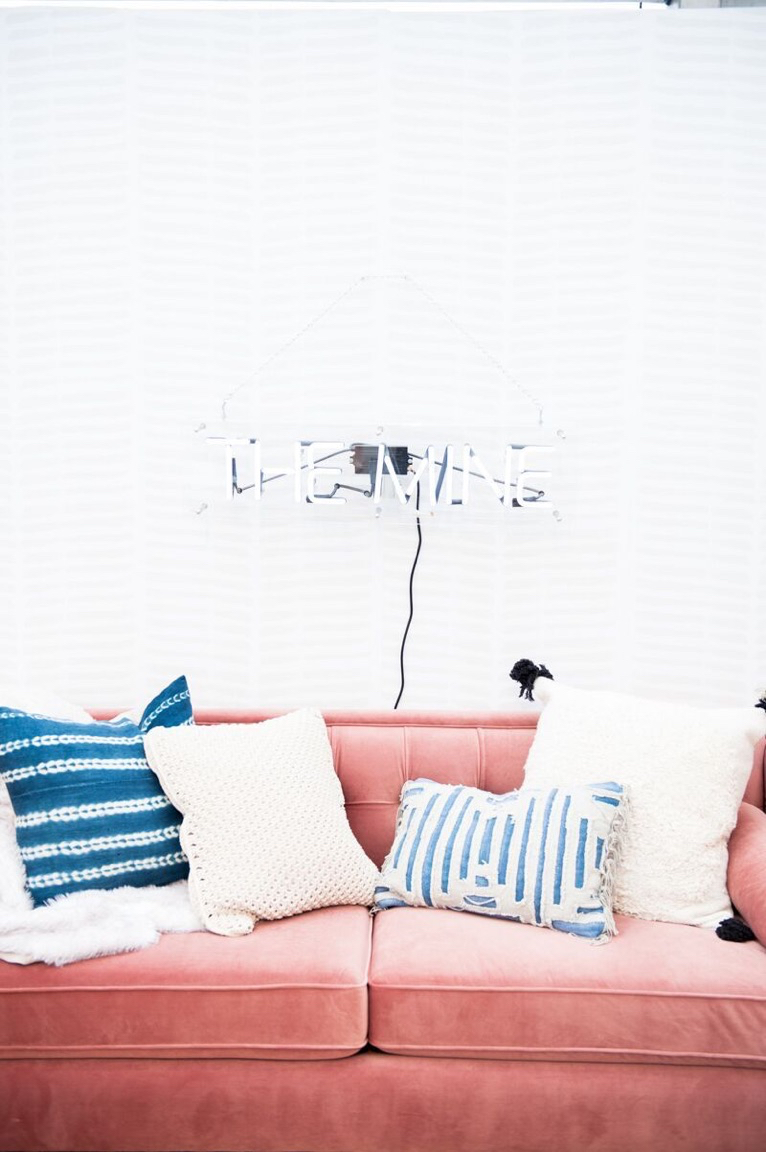Fight Stage Fright: Five Killer Steps to Speaking on Panel
Photo: Alyssa Dawson
Written by: Michelle Newbery, President of The Mine
I’ve had the opportunity to attend and participate in many panels over my career. The first one I ever attended was the Lowe's Women’s Leadership Summit, an annual event created by Lowe’s to empower women in retail and foster diverse thinking. It was an amazing experience that helped shape my career path at Lowe’s (which owns The Mine), inspired me to pursue my goals, and motivated me to help other women find success.
As President of The Mine, it was an honor to be asked again to be a panelist for the Create & Cultivate Conference at Microsoft Headquarters in Redmond, Washington. I’m deeply invested in the entrepreneurial pursuits of my fellow women in business, and I take my role in this event very seriously.
Here’s how I approached preparing for this year’s event:
1. Research the other presenters, and be prepared to get (a little) personal.
Organic dialogue between panelists always resonates with audiences, and it’s much easier to do if you can quickly and easily establish a genuine rapport with them. I was once on a panel at the Forrester’s Digital Transformation Event with other Lowe’s execs and we discussed the challenges of balancing speed with quality, and how to find middle ground that helped create The Mine as a very nimble part of the Lowe’s organization. The audience enjoyed the discussion, but became even more engaged when we framed “finding the middle ground” in a context of the Lowes.com VP’s love of barbecue and my tastes as a vegetarian. We talked about how compromise can lead to creative solutions, much like those we rely on at The Mine. In short, personalizing the story – revealing something about yourself to both the audience and your fellow panelists – can increase engagement across the board.
2. Know your audience, and know how to connect with them.
Who attends the event and what are they most interested in? How can you personally relate to them and share your own experiences in a way that will both inspire and help them get further, faster? I remember being at the Time, Inc., Home Summit and how designers there appreciated hearing about how e-commerce can positively impact their business. They also enjoyed learning about how we work with designers like Alexa Hampton; how meaningful those relationships can become. It’s easy for me to speak from the heart to designers about design, because it’s a passion of mine. But, what if you face an audience with interests that don’t dovetail so well with your own? It’s important to spend time learning about what you do have in common, so you can be prepared to best resonate with your audience.
3. Create a target list.
Who’s going to be at this event that you want to meet? You should always start networking before you get there. It only takes a moment to browse or start following an Instagram or Twitter feed to get familiar with what kinds of things interest the people you want to meet. If they have written a book or an article, read it. Mentioning it can make for a pretty irresistible conversation starter.
4. Make a cheat sheet and fill it with WOW.
Okay, so it’s not really a cheat sheet, but hopefully it got your attention – because these days fast facts and one-liners have the kind of social “stickiness” that big speeches lost long ago. Coming prepared with key statistics and talking points you can easily reference will help you show up authentically and build creditability. That’s what I learned at Create & Cultivate New York, an amazing conference to help women literally create and cultivate the careers of their dreams. Those women really knew the power of social media and were ready to use it. Audiences now have more socialsavvy than ever – they’ll Tweet you before you’re even ready, so keep your cheat sheet and WOW metrics close at hand.
5. Leave the script at home.
This is a tough tip to follow, but it’s important. It’s better to be natural, and maybe a little flawed, than to recite canned material like a robot. Be able to talk spontaneously about your facts, not just recite them. Preparing you message is important, but whem I’m facing an audience I try to relax and share by ideas more naturally by infusing personal stores and humor were possible. As a mom of a teenage daughter and tween son, I have a lot of material. Keep it professional, but keep them guessing. That’s how we can win over our audiences as panelists with presence.












